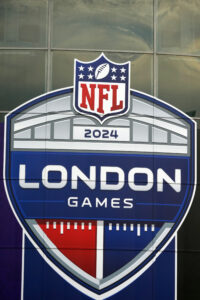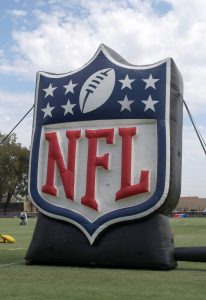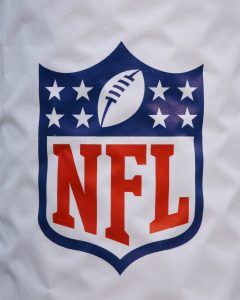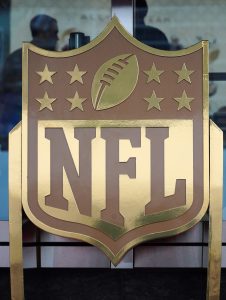NFL Commissioner Roger Goodell recently sat down to do an interview on Bloomberg TV for The David Rubenstein Show: Peer-to-Peer Conversations. In the interview, Goodell touched on a number of recent topics including the league’s goals for an 18-game season and a 16-game slate of international games in a season.
 Goodell approached the answer to a question about the 18-game season by claiming that “if (they) continue to focus on the safety” aspect of the game that 18 games could be the potential result. It’s a contradictory notion that Goodell attempts to justify with the suggestion of removing another preseason game to maintain “that 20-game framework.”
Goodell approached the answer to a question about the 18-game season by claiming that “if (they) continue to focus on the safety” aspect of the game that 18 games could be the potential result. It’s a contradictory notion that Goodell attempts to justify with the suggestion of removing another preseason game to maintain “that 20-game framework.”
The idea that replacing a preseason game with a regular game is a simple solution disregards many issues that come along with it. In regard to safety, increased games results in increased stress to the body and a higher likelihood for injury. Especially when considering that preseason games hardly see extended time from main starting players, replacing preseason games for regular-season games is not a one-for-one return in regard to safety.
Additionally, coaches and player personnel staff utilize preseason games to help whittle the roster down to the eventual 53 players who will open the season on the team. Continuing to reduce the number of preseason games robs a large number of fringe players of playing opportunities to show that they deserve a roster spot, potentially diminishing the quality of play in the league by denying diamonds in the rough a chance to shine.
The only seeming benefit that would result from the extension of the season is that every player would receive an extra game check, increasing the value of their contracts. In reality, the benefit goes to team owners and the league, who will all see a revenue increase from replacing poor-performing preseason games with higher-stakes regular-season contests. With no risk to their own health and safety, the support of an 18-game season has been a no-brainer for the elite in league circles.
NFLPA executive director Lloyd Howell, after going over superficial discussions with the NFL about the possibility of an 18-game season, spoke this past summer about concessions the players could seek in return for adding an 18th game. While overall compensation is the obvious one, other points of negotiation would include additional bye weeks, improved playing surfaces, and decreased travel, a contentious issue with the NFL’s insistence on expanding the game internationally. Not surprisingly, these are all health concerns for issues that could be further strained by an extension to the season.
While Goodell claims they would only move forward “with the players” on this decision, he calls it the “logical” next step. The situation feels like an inevitable transition from which the players will simply need to try to get whatever concessions they can.
On the topic of the international slate, Goodell confirmed recently mentioned plans to expand to 16 out-of-country games in a season. He has quickly pushed the slate from five such contests in 2024 to a confirmed eight in 2025. Increasing the number of games in a regular season to 18 would, in theory, make it easier to schedule 16 international games, but if the NFLPA decides to push back on the amount of travel in return for increasing the season, the league’s two goals could be working against each other.
Goodell did push back a bit on the possibility of expanding the league or relocating a team to an international site, though. While he does believe there are markets internationally that could sustain an NFL franchise, he cited issues with travel and competitiveness as hurdles in the execution. The notion a European franchise could spawn — or an American team could relocate — has not generated as much buzz over the past several years. Goodell’s latest remarks continue that trend.
He did project an idea that moving a division would make more sense than moving a single team. This solution would see three road games each year come with relatively short travel for those international teams, assuming they’re all in a close area like Europe. The remaining five or six road games would still require extensive travel, as would the travel for any teams visiting them. This would especially be an issue for any team whose schedule includes all four teams from the international division, requiring either two separate trips or one, long overseas trip to play those games.
The terms of the active collective bargaining agreement for the players are currently in place until 2030. Given the league’s quick work on the international slate, the owners’ eagerness to once again expand the NFL schedule, and Howell’s willingness to engage in early dialogue, it feels like a push for change is coming much sooner than that. Money talks, and if the NFL can alleviate the players’ concerns with promises of concessions, we may be watching a new-look season very soon.




